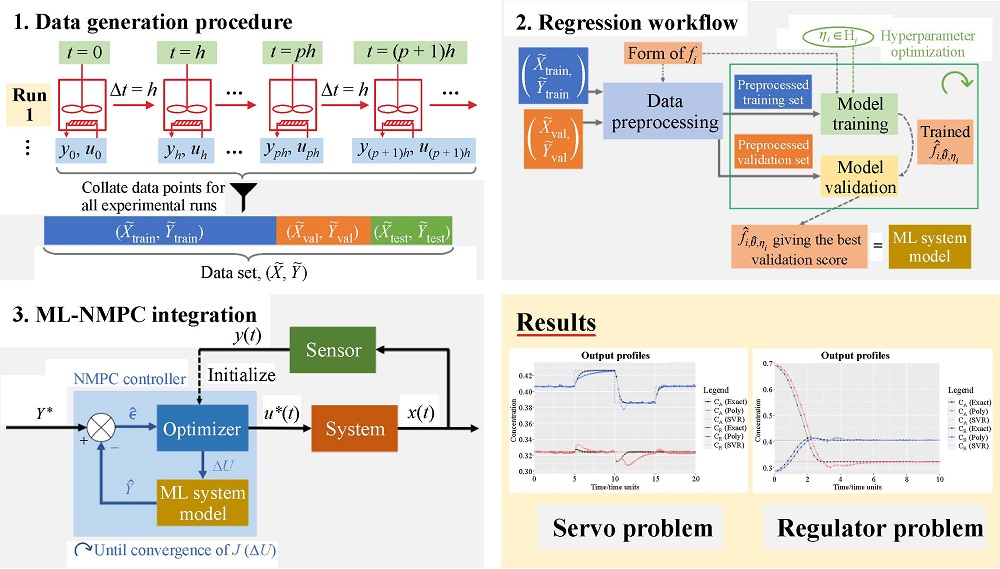The system model plays a determinant role in MPC. It should adequately describe the process dynamics across the controller operating range while remaining simple enough to allow fast optimization [
4]. These models could either be constructed from first principles, which might be difficult and costly for complex processes [
5], or directly inferred from empirical data [
6]. These models could also have different forms: linear, nonlinear, hybrid or nonparametric, among others. MPC products have typically relied on linear models to exploit efficient optimization algorithms [
7]. However, such linear MPCs might struggle to offer effective control outside a limited operating range [
5,
8]. Indeed, achieving tight control across a process’ entire operating range is generally difficult, with other conventional applications of widely-used methods like proportional-integral-derivative controllers also ill-equipped to handle systems that are highly nonlinear around their operating points [
9,
10]. Nonlinear MPCs (NMPCs) can overcome these limitations by employing nonlinear system models and system constraints, which have more flexible forms that permit better representation of the process over a wider operating range. This comes however at the expense of needing to solve non-convex optimization problems quickly and precisely [
11]. References [
3] and [
12] describe successful applications of different MPC formulations in a broad class of academic and industrial problems.

















